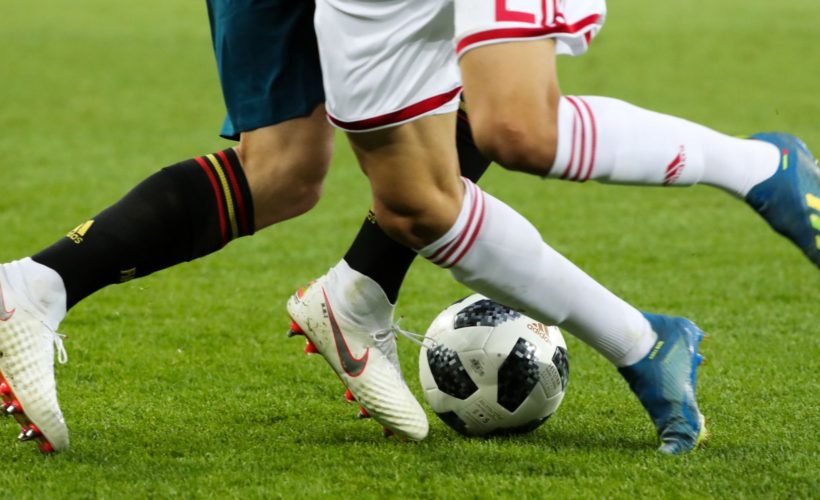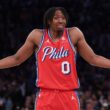Nike vs. Adidas.
The international soccer tournament has become a commercial dream for sportswear companies — a platform for some of the world’s biggest brands to duke it out for the estimated 1 billion fans watching the once-every-four-year championship.
Both Nike and Adidas generally keep quiet about their ad spending for the World Cup. Analysts estimate Adidas likely spent close to $100 million on sponsorship in 2014 — when Germany beat Argentina 1-0 in overtime. Nike also reported a 36 percent surge in marketing costs that year with much of it attributed to the World Cup.
Adidas, which is based in Germany, saw a big boost in sales after the country won in 2014, selling 2 billion euros worth of gear. CEO Kasper Rorsted told investors in a May 3 earnings call not to expect the same in Russia, the host county of this year’s tournament.
“We see this as a brand-building event,” Rorsted said. “The direct financing impact is limited.”
Adidas, which has been an official FIFA sponsor and partner since 1970, spends much of its money on ball branding, referee gear and placement around the stadium. Nike likes to bank on individual stars, sponsoring players and teams, outfitting them from head to toe.
Adidas had 12 official team sponsorships when the World Cup began back in June, including their home nation Germany that costs a whopping $56.7 million.
Nike also shelled out about $56 million on the French national team and about $40 million to sponsor the English team. Nike’s big bet panned out as both teams made it through to the semi-finals. As always with sports, you can never predict the outcome and Adidas unluckily saw its last team, Belgium, eliminated earlier this week.
Macquarie retail analyst Andreas Inderst says the main goal for a brand is visibility and sponsorship, having a team in a knockout round, semi-final or the final undoubtedly gives a boost to any brand.
“You see an immediate return with jerseys. If a certain team wins the World Cup then of course you want to buy the jersey,” he said. There is a second wave of sales around the semi-finals and finals, then a third wave after the final, he said.
Nike saw a spike in shirt sales in the U.K. after England, the unlikely contender, continued advancing through the tournament. The company even faced a shortage of jerseys ahead of the semi-finals. Nike’s vice president of Western Europe told Germany’s Handelsblatt: “Thanks to the good performance of our teams, the jerseys are selling phenomenally.”
Adidas, the No. 1 brand for soccer in the world, holds about 29 percent of the global market share, Nike has edged closer and dominates in the U.S. The brand upped its efforts to take a piece of the pie after the 1994 World Cup in the U.S.
No matter who is sponsoring the teams, each soccer player has their own preference for what cleats they wear and with an estimated 65 percent of all players in this year’s world cup wear Nike shoes. Of the total 150 goals scored leading up to the final, Nike cleats were worn for 94 of them. Analysts say it always helps to have the next winner wearing your brand.
“Golden Boot” contender Harry Kane of England, Portugal’s Cristiano Ronaldo and Uruguay’s Edinson Cavani all wear Nike shoes. Adidas is favored by Argentinian players Lionel Messi and Angel Di Maria. But Argentina lost 4-3 to France in the first round of the knockout stages.
Nike sponsors 15 of the top 25 all-star soccer players in the world, and the number of goals they score matters, according to Macquarie’s Inderst.
“Children and teenagers want to wear the same boot or cleat as the player that scores the most important goal in the final or the superstar of the World Cup,” Inderst said. This year’s top scorer is England’s Kane and his Nike Hypervenom Phantom III cleat.
Even with millions of dollars spent on advertising, in 2018, social media is king.
Regardless of branding, the Instagram, Facebook and Twitter followers of top players could ultimately be the most important drivers of sales this year, analysts said.
“People will continue to follow their idols regardless of the World Cup because there will always be another season, star power can go far beyond the match,” Inderst said.
Nielsen’s World Football Report found that stars like Ronaldo, Neymar and Messi — who have hundreds of millions of followers on social media — can be a more powerful advertising tool than traditional TV and print.
Ronaldo, who has more than 322.8 million followers across Facebook, Twitter and Instagram, is one of the most followed celebrities in the world — far exceeding the most popular Hollywood celebrity singer Selena Gomez. His Facebook, Twitter and Instagram accounts have generated about 570 million engagements — likes, comments, retweets, according to Nielsen.
“Individuals are more powerful than the platform they are given,” said analyst Simeon Siegel of Instinet. Their personal brand may even be more popular than their sponsor’s.
“The goal of the endorser isn’t to simply sell out a product,” Siegel said. The goal is to create “a halo impact and give credibility to the brand.”
Adidas might be the official sponsor of the World Cup, but Nike is Sunday’s clear winner, analysts said. It sponsors both teams in the final as well as some of the world’s best players in that match. Nike’s strategy of vying for player over team seems to have panned out. In the game of marketing, analyst Siegel says, Nike always wins.
Correction: The two countries playing in the World Cup final are France and Croatia.
Source:CNBC






